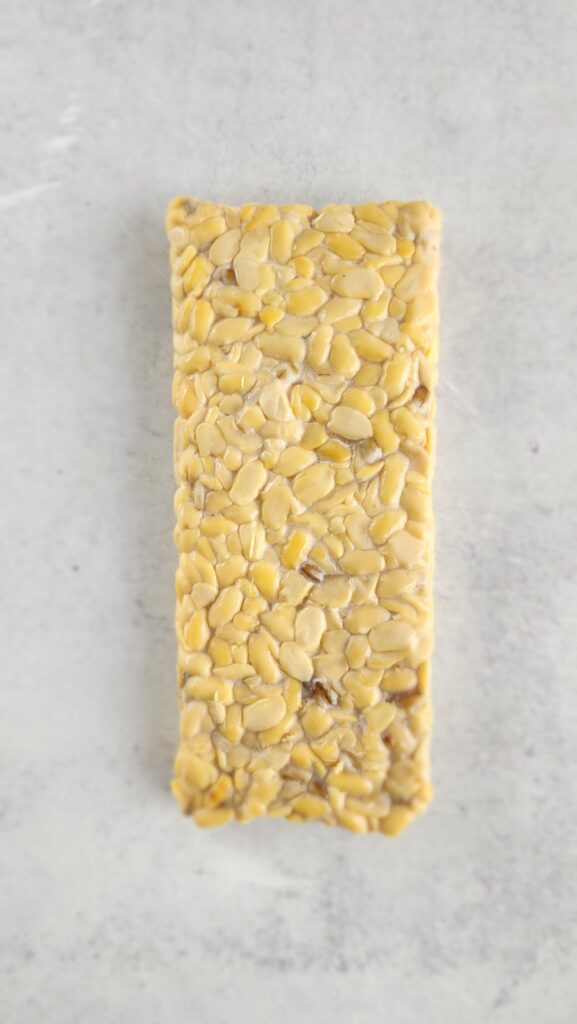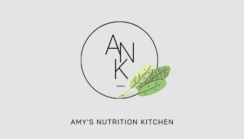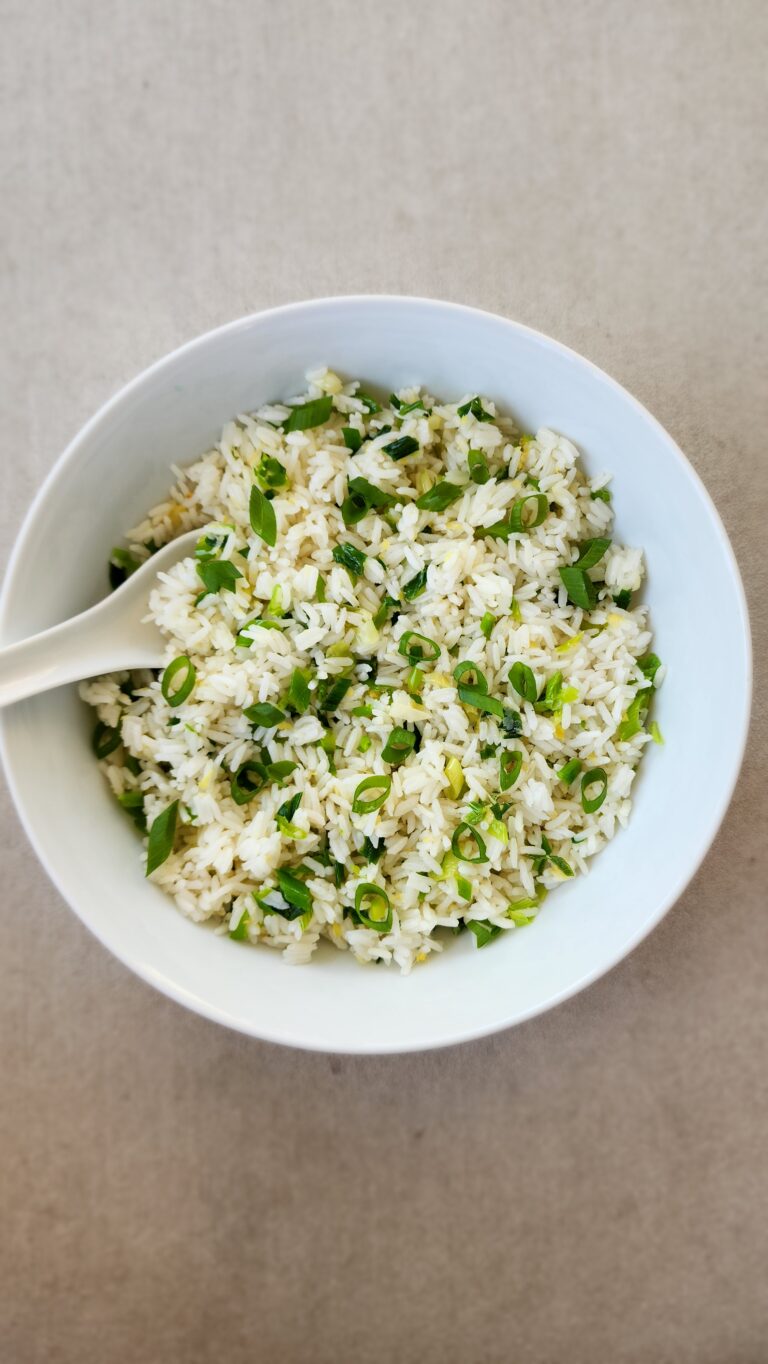This sautéed tempeh has a savory, umami flavor. Packed with protein, it makes an amazing quick weeknight dinner. Serve with rice and your favorite roasted veggie!
I’m often asked, ‘How long have you been vegetarian?” In 2005, there were a couple of different reasons why I decided to stop eating animal protein. After years of studying nutrition, it only solidified (for me) that I didn’t have to eat animal protein to obtain all the nutrients I needed to be healthy. Additionally, with some health history in my family, it was a great way to reduce my saturated fat intake. Last, I didn’t enjoy animal protein (it’s a texture thing).
Flash forward to 2017, training for a full marathon, and I started to incorporate some seafood for protein to help ensure I was getting an adequate amount of protein and make it easier for me during my training. To this day, I include seafood (and you’ll see recipes for seafood on my site). However, it still comes back to texture, and even then, sometimes I am just not feeling it. My motto is to eat what you want when you want; no labels are needed.
Long before every imaginable type of plant-based burger existed, soybeans reigned supreme. Soybeans are a *fantastic* source of plant protein, and they remain so. Edamame, tofu, and tempeh are the most commonly seen forms of soybeans. I love seeing soybeans in different forms and creating different dishes with each of the various forms. Some people may say, “I don’t like tofu“; however, I’m here to tell you that many times, it’s the way a dish is prepared. Stay open, try different forms, and return occasionally to see if you don’t like it!
What is Tempeh?
Tempeh can be credited to the creative cooks on the island of Java in Indonesia. While the earliest mention was in the early 1800s, it’s likely older. The base ingredients are partially cooked, cooled, and then injected with a fungal culture, which is what/how it ferments. The microorganisms grow around the beans and grains to form a firm cake. Tempeh cannot be eaten raw. It MUST be cooked, deactivating the culture. Therefore, technically, it is not a probiotic. The good news? It does contain plenty of prebiotics, which help promote gut health, feeding the ‘good’ bacteria in your system.
Tempeh is a fermented, high-protein food typically made with soybeans (a cake-like substance made from cooked and slightly fermented soybeans). However, any bean, grain, or seed can be used. According to the USDA, 4 ounces provides 19 grams of protein and 8 grams of fiber. (Animal protein has 7 grams of protein for every ounce, so while tempeh has slightly less, it is still an amazing source of protein to incorporate). Additionally, it contains a TON of fiber. Animal protein includes NO fiber. As a dietitian, I encourage you to incorporate more plants into your routine. This doesn’t mean you have to omit animal protein; rather, you should look for ways to incorporate plants so you obtain MORE fiber!


How To Cook Tempeh
Tempeh looks like a clump of beans stuck together. There are more eloquent ways to describe it, but suffice it to say it has texture, whereas tofu is more curd-like. Tempeh has a chunky texture and nutty/mushroom flavor. Remember, it is a fermented protein, so some might describe it as having some umami flavor/slight aftertaste. I recommend adding your favorite sauce, and you’re good to go! My go-to method is to sauté the tempeh and add it to whatever dish that might need a protein boost. Below is my Sautéed Tempeh with Sesame Ginger Sauce served with rice and a roasted vegetable.
Tempeh can be added to your favorite stir-fry, as a replacement for ground beef in dishes, or even grated to add to soups. Additionally, you can bake it into a casserole or even throw it onto the grill. The truth is that it can stand in for meat in almost any dish. Remember, tempeh is the OG for plant protein and not those bleeding burgers (which I never liked the texture to begin with!)
How To Improve the Flavor of Tempeh
Many people claim this step is necessary to remove the bitter flavor. The sauce I’m pairing it with is bold and often helps offset the bitterness; however, this is something to keep in mind for other dishes to which you might add the tempeh.
- Steam tempeh to help remove the bitterness before adding it to your dish. You can steam it by using a steamer basket in a saucepan covered with water or a vegetable broth. This will take 5 to 10 minutes to steam.
- Smaller cuts: In my picture, I used triangles to make it look prettier. However, it tastes better and cooks more evenly if you cut it into thinner slices orcrumbles. Additionally, the smaller pieces will soak up the flavor of the sauce/marinade better and then have an easier time’ crisping’ up as they cook.
- Sauté: This is my go-to method, not only for a quick and easy dinner but also because this way, I’ve found that it does taste the best.
- You Need a Great Sauce: Tempeh is similar to tofu in that it takes on the flavor of whatever sauce you pair it with. My sesame-ginger sauce is the one I tend to go back and use the most often.


How To Sauté Tempeh
Please make sure you have a non-stick pan to help the cooking process and prevent the tempeh from sticking. (Some people have used an air fryer; however, I have not tested that method of cooking.) If you do not have a non-stick pan, a well-greased cast iron pan (or even a stainless steel skillet) will do. First, please preheat the pan before you get started.
- Start by slicing the tempeh into extra-thin slices or strips (again, I cut it into triangles for the picture). Meanwhile, preheat your non-stick pan over medium heat.
- Add cooking oil to the pan. One tablespoon is enough for the 8-ounce block of tempeh. Add the tempeh to the pan when the oil starts to shimmer. Try to avoid crowding the pan. You want to leave some space in between so the tempeh can crisp up. If you need it, please cook the tempeh in two batches. (My sauce has some sesame oil, which will be added to coat the tempeh, so I used less oil.)
- Flip and cook the slices on the other side until golden brown.
- Add 1-2 tablespoons of the sesame-ginger sauce to the pan. The tempeh will start to caramelize and turn golden brown.
- Serve with your favorite roasted vegetable and rice (as pictured!). Enjoy!
Quick Weeknight Dinners
Print
What is Tempeh (& How To Cook It!)
5 Stars 4 Stars 3 Stars 2 Stars 1 Star
5 from 1 review
This sautéed tempeh has a savory, umami flavor. Packed with protein, it makes an amazing quick weeknight dinner. Serve with rice and your favorite roasted veggie!
- Total Time: 15 minutes
- Yield: 2 1x
Ingredients
- 8–ounces tempeh, sliced thinly
- 1 tablespoon extra-virgin olive oil
- 2 tablespoons sesame ginger sauce
- Serve with rice and a roasted vegetable
Instructions
- Start by slicing the tempeh into extra-thin slices or strips (again, I cut it into triangles for the picture). Meanwhile, preheat your non-stick pan over medium heat.
- Add cooking oil to the pan. One tablespoon is enough for the 8-ounce block of tempeh. Add the tempeh to the pan when the oil starts to shimmer. Try to avoid crowding the pan. You want to leave some space in between so the tempeh can crisp up. If you need it, please cook the tempeh in two batches. (My sauce has some sesame oil, which will be added to coat the tempeh, so I used less oil.)
- Flip and cook the slices on the other side until golden brown.
- Add 1-2 tablespoons of the sesame-ginger sauce to the pan. The tempeh will start to caramelize and turn golden brown.
- Serve with your favorite roasted vegetable and rice (as pictured!). Enjoy!
- Author: Amy’s Nutrition Kitchen
- Prep Time: 5
- Cook Time: 10
- Category: Dinner






1 thought on “What is Tempeh (& How To Cook It!)”
That tempeh looks phenomenal! WOW!! Excited to try!